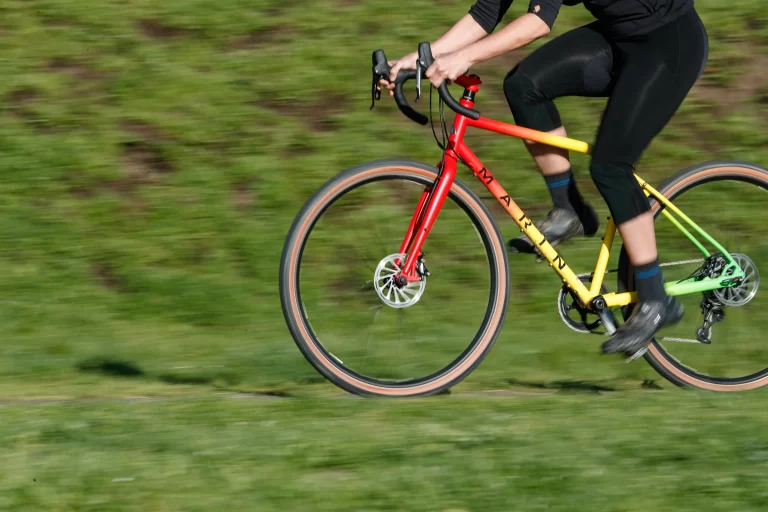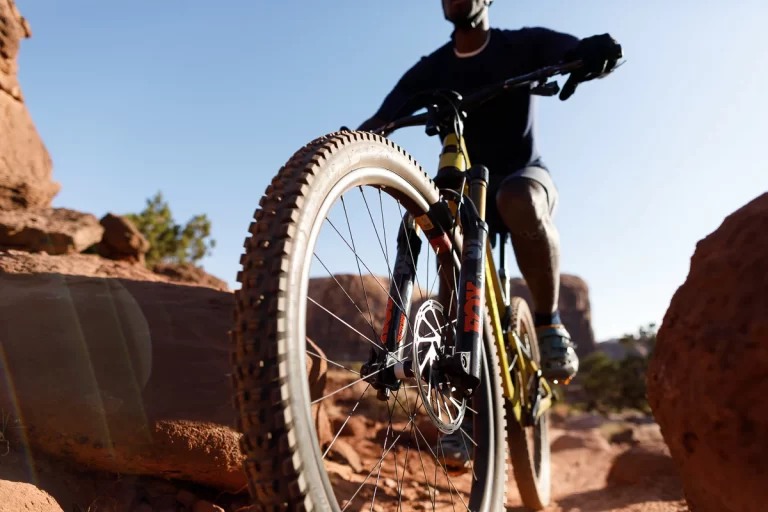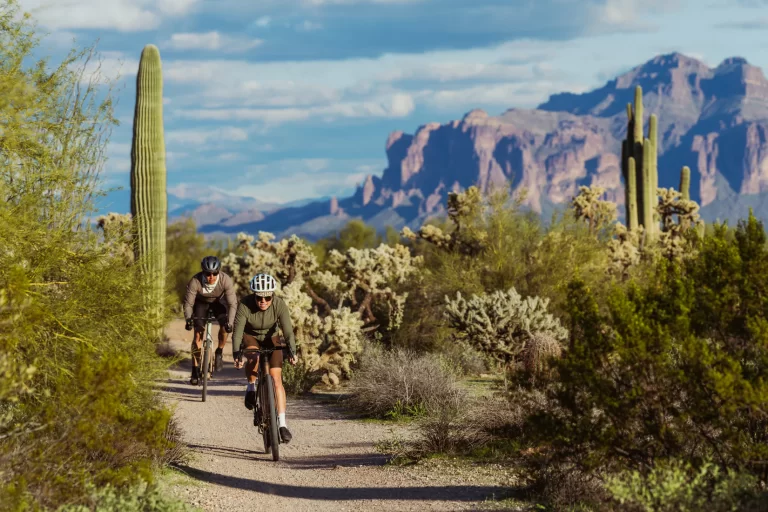Mountain Bike Wheel Buyers Guide

Introduction
Wheels are often touted as the heart and soul of a bike. In the world of mountain biking, choosing the right set of wheels is pivotal. They influence everything from your bike’s agility and stability to how comfortable and efficient your rides are. In this Mountain Bike Wheel Buyers Guide, we lay out all the considerations to help you find the perfect mountain bike wheelset for you.
Understanding Wheel Size
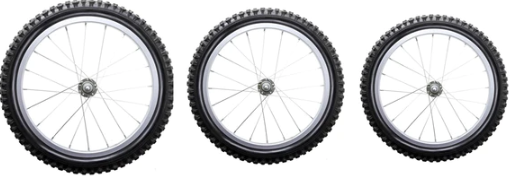
Mountain biking has seen an evolution in wheel sizes over the years:
- 26-inch: Once the undisputed standard for all mountain bikes, this size is becoming less common. However, it remains beloved by riders who prioritize agility and a nimble feel.
- 27.5-inch (650b): Emerging as a middle ground, this size marries the nimbleness of 26-inch wheels with the roll-over prowess of 29-inch ones. Ideal for riders who want a bit of everything.
- 29-inch: The big wheel on the block. Its larger diameter means it effortlessly rolls over obstacles, making it a favorite among cross-country (XC) and trail riders.
Rim Width
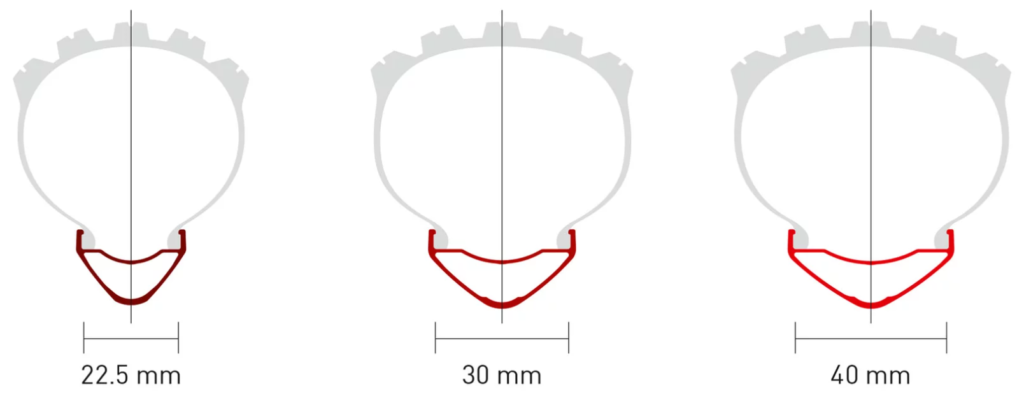
Rim width can alter a tire’s shape and, consequently, its performance. A wider rim pairs best with a wider tire, ensuring stability and grip. When choosing, consider:
- Internal Rim Width: The distance between the insides of the rim. This directly affects the tire’s shape.
- External Rim Width: Influences the wheel’s aerodynamics and strength but is less crucial for tire compatibility.
Tubeless vs. Tubed
Modern mountain biking leans towards tubeless setups. Benefits include puncture resistance, the ability to run on lower pressures for better grip, and weight savings. When opting for tubeless, ensure the rim is tubeless-ready, and remember you’ll also need tubeless tires and sealant.
Material: Aluminum vs. Carbon
The age-old debate:
- Aluminum: Generally more affordable and offers great strength and durability. It might be slightly heavier than carbon but is often more resilient to impacts.
- Carbon: Light, stiff, and can provide a smoother ride. However, it’s usually pricier and, while strong, can be more susceptible to damage from sharp impacts.
Axle Types
Your frame and fork dictate the axle type:
- Quick Release (QR): An older system that’s still on some bikes. It’s user-friendly but might lack the stiffness of thru-axles.
- Thru-Axle: Offers better stiffness, ensuring precise handling. Comes in various sizes (e.g., 12x100mm, 15x100mm, 12x142mm), so ensure compatibility.
Spoke Count and Lacing
A wheel with more spokes is typically stronger but heavier. Your riding style (aggressive downhill vs. cross-country) will influence the ideal spoke count. Also, explore different lacing patterns which can affect wheel strength and resilience.
Hubs
A wheel’s hub affects its rolling efficiency. Look for hubs with sealed bearings for durability. For technical riding, consider hubs with quicker engagement, allowing faster power transfer when you start pedaling.
Budget Considerations
Balancing cost with quality is tricky. While it’s tempting to opt for the cheapest option, remember that wheels endure a lot. Investing in a reliable set might save you money and hassles in the long run.
Upgrades and Future-Proofing
When investing in wheels, consider potential future upgrades. For instance, if you plan to upgrade to disc brakes, ensure your new wheel can accommodate this.
Brand and Model Recommendations
While individual preferences vary, always read reviews and perhaps test ride before purchasing.
Click here to see our ratings of the Best Mountain Bike Wheelsets
Mountain Bike Wheelset Considerations for Different Types of Mountain Biking
As each mountain biking type varies in terms of terrain, speed, and required technical skill, riders need to consider several wheelset attributes to ensure optimal performance and safety. Let’s delve into these considerations for four popular mountain biking types: cross country, enduro, downhill, and trail.
1. Cross Country (XC):
Terrain: Rolling hills, technical singletracks, and extended climbs.
Wheelset considerations:
- Diameter: Most XC riders prefer 29-inch wheels as they roll faster and smoother over obstacles. The larger diameter offers better traction and efficiency on climbs.
- Width: XC rims are generally narrower (around 20-25mm inner width) because they accommodate narrower tires for speed.
- Weight: Weight is a critical consideration. Lighter wheelsets mean less rotational mass, leading to quicker acceleration and easier climbing.
- Durability: While strength is vital, XC wheelsets tend to be less burly than those designed for aggressive downhill riding.
2. Enduro:
Terrain: Varied, with both challenging climbs and demanding descents.
Wheelset considerations:
- Diameter: 27.5-inch wheels are popular for their nimbleness and quick turning ability, though some riders prefer the rollover advantages of 29-inch wheels.
- Width: A wider rim (around 30mm inner width) is typical, providing support for broader tires that offer more traction and cushioning.
- Weight: Enduro wheelsets are a balance between weight and strength. They should withstand tough descents but not be too heavy for climbs.
- Durability: Enhanced durability is necessary due to the challenging terrain and potential for high-speed impacts.
3. Downhill (DH):
Terrain: Steep and technical descents with jumps, drops, and rocks.
Wheelset considerations:
- Diameter: 27.5-inch wheels are dominant, offering a good blend of stability and agility.
- Width: Wider rims (30mm and above) are favored for their ability to support hefty, durable tires.
- Weight: Weight is less of an issue in DH since riders are mostly descending. The emphasis is on strength and durability.
- Durability: DH wheelsets are built tough. Double-walled rims and a higher spoke count are common features.
4. Trail:
Terrain: A mix of climbs and descents, with varied technical challenges.
Wheelset considerations:
- Diameter: Both 29-inch and 27.5-inch wheels have their advocates in trail riding, with the choice often coming down to rider preference and terrain.
- Width: Rims in the 25-30mm inner width range are common, offering a good balance for versatility.
- Weight: Trail wheelsets are an all-around solution, so a middle-ground weight is often sought after.
- Durability: These wheelsets should be robust enough to handle occasional aggressive descents while remaining light enough for efficient climbing.
In conclusion, the diverse nature of mountain biking demands specialized equipment, with wheelsets being no exception. By understanding the specific demands of each type of mountain biking, riders can make informed decisions, ensuring their wheels deliver the perfect blend of performance, durability, and ride quality for their chosen discipline. Whether one is scaling the heights in cross country or descending with adrenaline in downhill, the right wheelset can make all the difference.
Top Mountain Bike Wheelset Manufacturers
Conclusion
Your mountain bike’s wheels are pivotal to your riding experience. While the plethora of choices can be daunting, by understanding your needs and doing thorough research, you can find the perfect wheelset to elevate your rides.
Have fun out there! John
FAQ’s
What is the difference between 27.5 and 29 mountain bike wheels?
Both 27.5-inch (sometimes referred to as 650b) and 29-inch wheels are popular choices for mountain bikes, and each has its own set of advantages and trade-offs. Here’s a comparison:
27.5-inch (650b) Wheels:
Advantages:
- Agility: Generally, bikes with 27.5-inch wheels are seen as more agile and easier to maneuver, especially in tight switchbacks and twisty trails.
- Acceleration: They tend to accelerate a bit faster than their 29er counterparts due to the smaller wheel circumference and often lighter weight.
- Weight: All things being equal (which they often aren’t), a 27.5-inch wheel can be slightly lighter than a 29-inch wheel.
- Fit: For smaller riders, a 27.5-inch wheel can offer better bike fit and geometry options.
- Jumping and Playfulness: Many riders feel that 27.5-inch wheels lend themselves better to jumping, playing on features, and making mid-air adjustments.
Disadvantages:
- Rollover: They don’t roll over obstacles as easily as 29ers.
- Momentum: Once up to speed, they might not maintain momentum as efficiently as the larger wheels.
29-inch Wheels:
Advantages:
- Rollover: The larger circumference allows the wheel to roll over obstacles, such as rocks and roots, more easily. This can make rough terrains feel somewhat smoother.
- Momentum: Once a 29er is up to speed, it tends to maintain its momentum better than a smaller wheel.
- Traction: The larger wheel size can offer a slightly larger contact patch with the ground, potentially providing better traction.
- Stability: Some riders feel more stable, especially at high speeds, on a 29er.
Disadvantages:
- Weight: Generally, 29-inch wheels are heavier than 27.5-inch wheels, making them slightly slower to accelerate.
- Maneuverability: The larger wheel size can feel less nimble in tight, technical terrains.
- Fit for Smaller Riders: Some smaller riders might feel “overwhelmed” by the larger wheels, although many modern bike designs have addressed this issue.
Final Thoughts: The choice between 27.5-inch and 29-inch wheels often comes down to personal preference, riding style, and the type of terrain you frequent most. Test riding bikes with both wheel sizes can provide insight into what feels best for you. It’s also worth noting that some manufacturers offer “mixed-wheel” bikes, with a 29-inch wheel up front for improved rollover and a 27.5-inch wheel in the rear for agility.
What wheels fit my mountain bike?
To determine which wheels fit your mountain bike, you’ll need to consider several factors:
- Wheel Size: Most mountain bikes will be designed to fit either 26-inch, 27.5-inch, or 29-inch wheels. The size should be marked on the sidewall of your current tire.
- Hub Width and Axle Type: The hub width and axle type need to match your bike’s frame and fork. Common standards include:
- QR (Quick Release): Traditional system with skewers.
- Thru-axle: More common on modern mountain bikes. They come in various sizes. Common sizes for front thru-axles are 15x100mm or 15x110mm (Boost), and for the rear, it can be 12x142mm or 12x148mm (Boost), among others.
- Brake Compatibility: Ensure the wheel is compatible with your brake system.
- Disc Brakes: The most common on modern mountain bikes. There are two main rotor attachment types: 6-bolt and center-lock.
- Rim Brakes: These are becoming less common on mountain bikes, but if your bike has them, you’ll need rims with a braking surface.
- Freehub Body: The freehub body needs to be compatible with your cassette. There are different types for Shimano/SRAM, Campagnolo, and some specific brands like SRAM’s XD Driver.
- Rim Width: While this won’t prevent a wheel from fitting your bike, it’s essential for tire compatibility. Wider rims can support broader tires, which might be preferred for more aggressive riding styles. Ensure the tire width you plan to use is suitable for the rim width of the wheel you’re considering.
- Frame/Fork Clearance: Ensure the tire width you intend to run will clear your frame and fork. Modern trail, enduro, and downhill bikes tend to have more clearance than older models or XC-oriented bikes.
- Tubeless Compatibility: If you plan to run a tubeless setup, ensure the rims are tubeless-ready or can be made tubeless with a conversion kit.
Recommendation:
To get the most accurate wheel recommendation, consider the following steps:
- Check Your Bike’s Manual: This will often provide specifications on compatible wheel sizes, hub widths, and axle types.
- Visit a Local Bike Shop: They can inspect your bike and recommend compatible wheels.
- Manufacturer’s Website: If you know the make and model of your bike, the manufacturer’s website may have detailed specifications available.
Remember, investing in wheels can significantly change your bike’s performance, so it’s worth taking the time to ensure you get the right fit.
Are 28 spoke wheels strong enough for a mountain bike?
The strength of a mountain bike wheel isn’t solely determined by the number of spokes but by a combination of factors including the quality of the spokes, the lacing pattern, the rim, the hub, and how well the wheel is built (i.e., its tension and trueness). That said, the number of spokes does play a significant role in a wheel’s durability and strength.
A 28-spoke wheel is typically found on lighter-weight XC (cross-country) mountain bike wheels or on wheels designed for road or gravel bikes. Here are some considerations:
Pros of 28-Spoke Wheels:
- Weight: Fewer spokes typically mean a lighter wheel, which can be advantageous for acceleration and climbing.
- Aerodynamics: Less of a concern for mountain biking than for road cycling, but fewer spokes can offer slightly better aerodynamics.
Cons of 28-Spoke Wheels:
- Strength: Generally speaking, a wheel with fewer spokes will be less robust than one with more spokes, all else being equal.
- Durability: If one spoke breaks on a 28-spoke wheel, the reduction in overall wheel strength and integrity is proportionally more significant than on a wheel with more spokes.
- Maintenance: With fewer spokes to distribute the load, there can be increased stress on each spoke, potentially leading to more frequent maintenance.
Is a 28-Spoke Wheel Right for You?
- Riding Style: If you’re doing aggressive trail riding, enduro, or downhill, a 28-spoke wheel might not be robust enough. For light XC riding on smooth trails, it might be sufficient.
- Rider Weight: Lighter riders might get away with fewer spokes, while heavier riders will benefit from more spokes.
- Terrain: Riding in areas with lots of rock gardens, drops, or technical challenges will demand a stronger wheel than smooth, flowy trails.
- Skill Level: Skilled riders can navigate rough terrain without putting as much stress on their wheels, while beginners might have harder impacts.
Conclusion:
While 28-spoke wheels can work for some mountain bikers, especially those focused on weight savings for cross-country racing, they might not be suitable for everyone. Always consider your weight, riding style, and the typical terrain you ride when making a decision. If in doubt, consulting with a local bike shop can provide personalized advice based on your need
